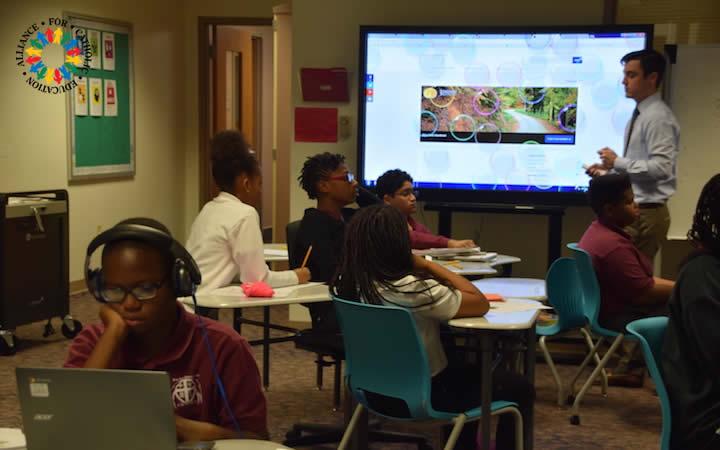This post is the first in a series about teaching in a blended classroom written by Sean Wolohan, the fifth- and sixth-grade math and science teacher and Blended Learning Coordinator at Holy Angels Catholic School in Indianapolis. If you would like to hear more from Sean, please comment below or email him at swolohan@holyangelscatholicschool.org. You can also find him on Twitter @sean_wolohan.
 At the heart of what we do as educators is our belief that every student has a unique set of intrinsic gifts and talents. At Holy Angels Catholic School, we saw that the traditional classroom did not maximize the gifts and talents of each of our students. To create an environment that more accurately reflects what we know about each student's individuality, we chose to blend adaptive online instruction with the talent and expertise of our teachers.
At the heart of what we do as educators is our belief that every student has a unique set of intrinsic gifts and talents. At Holy Angels Catholic School, we saw that the traditional classroom did not maximize the gifts and talents of each of our students. To create an environment that more accurately reflects what we know about each student's individuality, we chose to blend adaptive online instruction with the talent and expertise of our teachers.
For some students, independent online instruction is the most challenging and engaging method of instruction and practice. One sixth-grade student in particular has tripled the average growth of students around the country by working both in and out of class on his personalized playlist (a line-up of online tutorial videos and skill practice questions). His goal is to reach an eighth-grade level of proficiency by the end of this year!
Other students prefer teacher-led instruction and a more traditional classroom feel. We welcome these differences in learning styles and preferences, but we expect students to communicate what helps them learn best and work hard on the personalized learning path that we help them create. Each student has unique needs that demand unique solutions, which we try to craft in creative ways.
For one aspiring Harvard lawyer (yes, that's her goal at age 12!), the Chromebook-based learning experience is frustrating and distracting. If she works on the Chromebook too long, her eyes start to hurt and she loses focus. After she expressed this to me, we worked together to develop a system that includes a little time on the Chromebook (so I can still get real-time data on progress) but shifts the focus to more textbook-based instruction. She still progresses and masters standards at her own pace rather than on a pre-determined schedule, but she relies less on the online programs than others do.
We ask the students to take initiative and responsibility for their own learning by meeting or exceeding their weekly goals, no matter what that takes. We use the data from the software programs and our own assessments to ensure that students are growing, working hard, and mastering the standards that correspond with their goals.
I have to admit that we are still far from the perfect formula. It will take years for students to fully develop as independent learners and take their success into their own hands (and for teachers to become comfortable with this shift in power). We are hoping to accelerate this process through weekly one-on-one conferences in which students and teachers together review and set individual goals and monitor progress. By making this conference a conversation between teacher and student rather than one-way feedback, the teacher and student co-create a plan to improve. By training our students to excel in a dynamic classroom that depends on their efforts and independent work ethic, we are training lifelong learners who will find success outside the walls of the classroom.
Earlier this week, a student came to me a few days after we had talked about his test scores. He pointed out that geometry was his weakest domain on his recent quizzes, so he requested extra lessons on the computer and asked me to help him with figuring area and perimeter.
This unprompted request for help indicated that students are identifying their own strengths and weaknesses in an an effort to improve. The student showed me that if we expect independent learning and responsibility from our students, they will rise to the occasion. If we truly believe that every student is a child of God, uniquely and wonderfully made, then we as teachers must manifest this belief by treating each student as an individual and expecting greatness of them. I have already seen that students will exceed even our highest hopes for them. As we continue our blended-learning journey at Holy Angels, I am excited to see how students develop as independent learners and as individuals, created in the image and likeness of God.
 Alliance for Catholic Education
Alliance for Catholic Education
